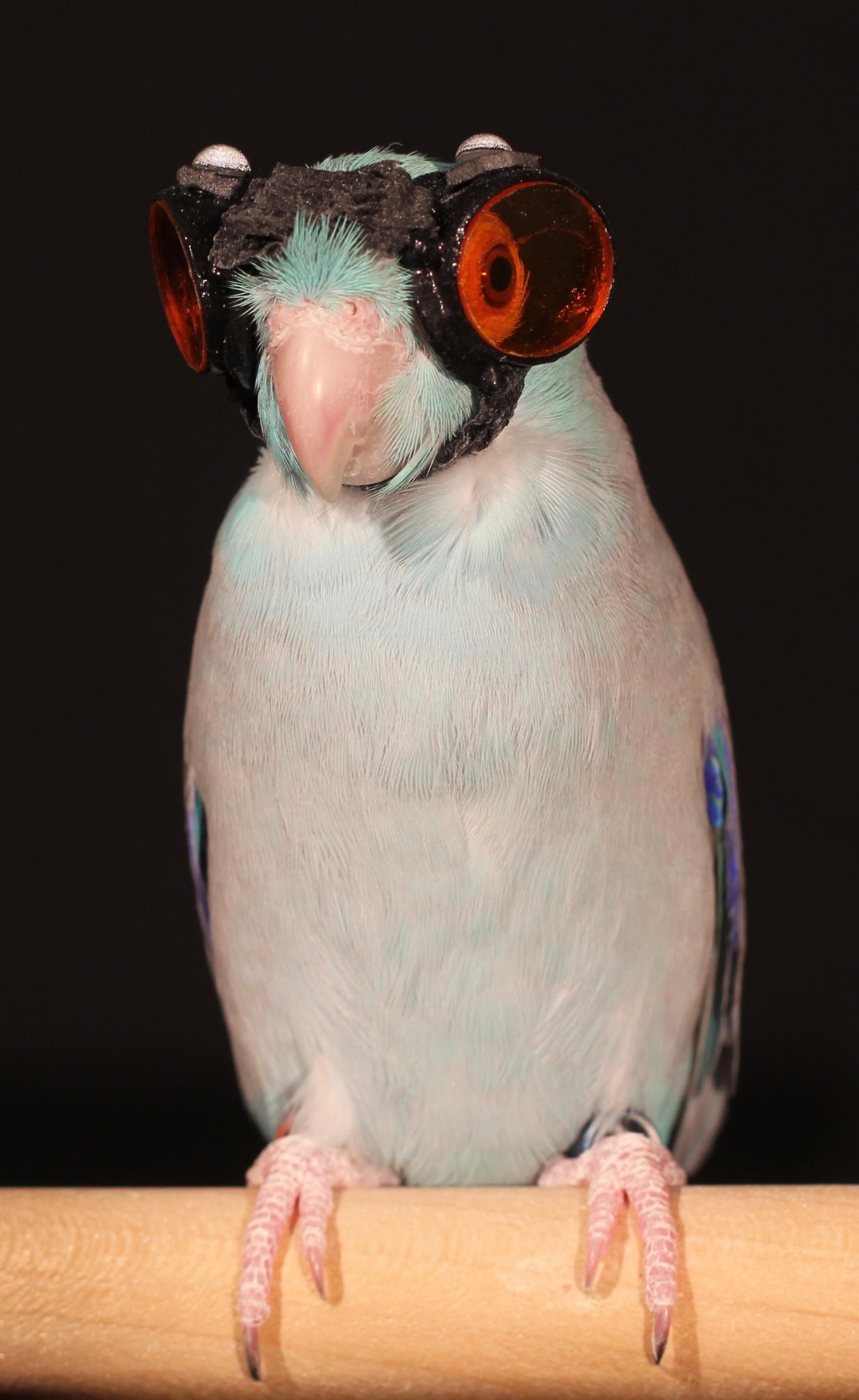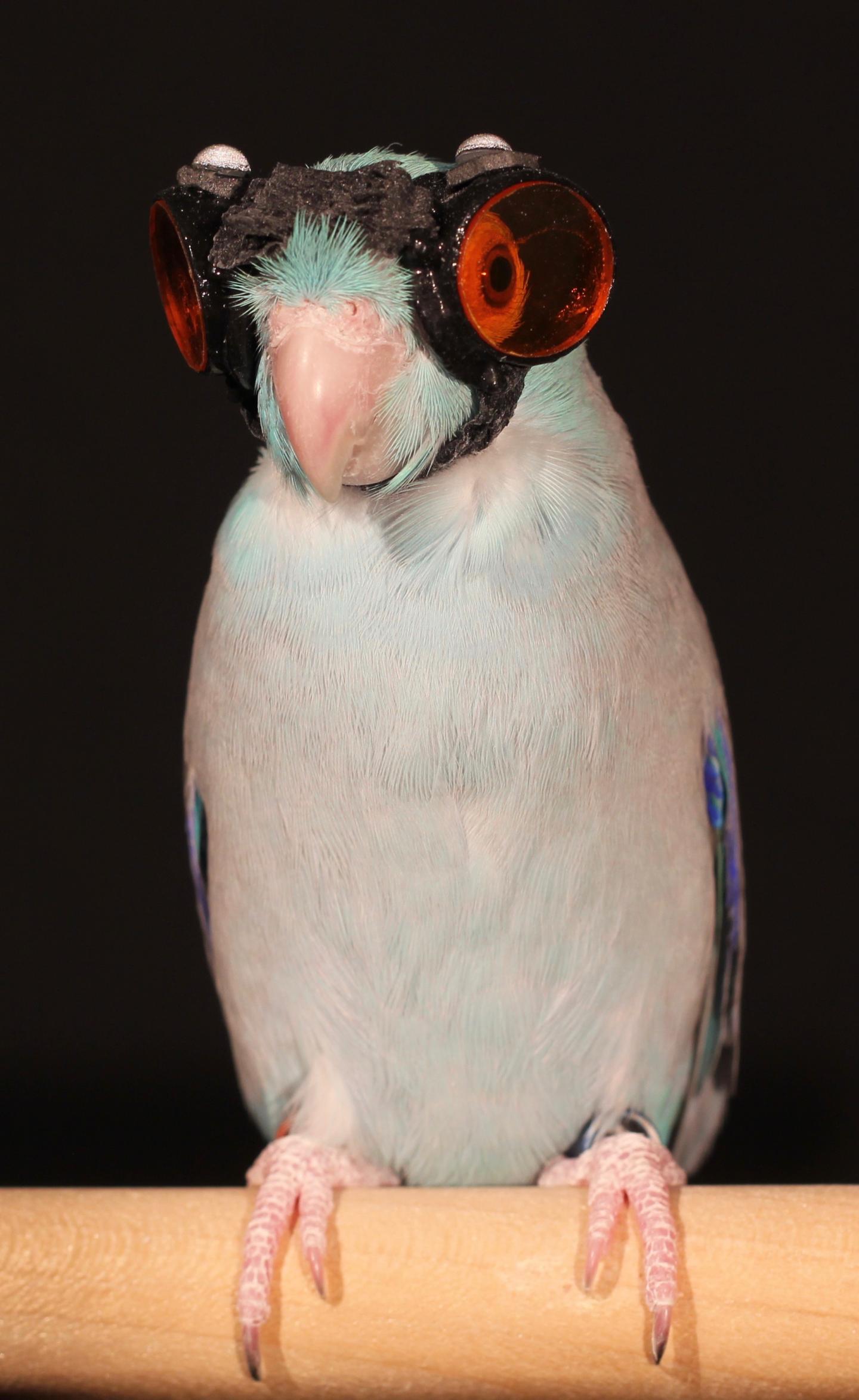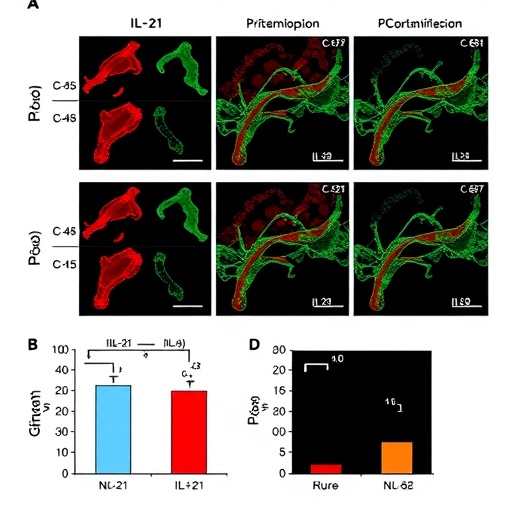
Credit: (Photo: Lentink Lab, Stanford University)
ARLINGTON, Va.–Resembling a feathered flying ace with his miniature protective goggles and chinstrap, the parrotlet named Obie stood ready to take off. On signal, Obie propelled into the air, flapped through a laser field infused with microparticles and landed on another perch three feet away.
The journey only lasted three seconds, but it challenged the accuracy of three aerodynamics models long used to predict animal flight. It also might impact future designs of bio-inspired drones, robots and unmanned aerial vehicles (UAVs), a topic of interest to the U.S. Navy and Marine Corps.
Sponsored by the Office of Naval Research (ONR), researchers at Stanford University found a new way to precisely measure the vortices–circular patterns of rotating air–created by birds' wings during flight. The results shed greater light on how these creatures produce enough lift to fly.
"One of the most exciting recent advances in understanding flying animals has been the use of new technologies like this to collect all kinds of data in free-flight conditions," said Marc Steinberg, an ONR program manager who oversees the research. "We can learn what's really happening–the biology and physics–and apply it to create UAVs capable of navigating challenging environments like under a thick forest canopy or through urban canyons."
Led by Dr. David Lentink, the Stanford team tested three models commonly used to estimate how much lift birds, and other flying animals, generate when flying.
First, they had Obie and other parrotlets fly several times through a laser field flashing 1,000 times per second, lighting up nontoxic aerosol particles the size of a micron (one thousandth of a millimeter).
As Obie flapped through the field, thin mist particles moved around his wingtips and were photographed by super-high-speed cameras–creating a new picture of the vortices in the wake of a flying animal. The Stanford researchers took this data and combined it with measurements gathered from another instrument, an aerodynamic force platform, invented in Lentink's lab with support from ONR.
"The platform is basically an ultra-sensitive weight scale that measures the force generated when a bird takes off in a specially designed flight chamber," said Lentink, an assistant professor of mechanical engineering.
The researchers then applied each of the three prevailing models to these new measurements multiple times. In each case, the existing models failed to forecast the actual lift of the parrotlets.
The problem is that long-standing models are based on historical measurements taken a few wingbeats behind a flying animal, resulting in predictions that wing vortices stay relatively frozen over time–like the puffy clouds that form and dissipate slowly in an airplane's wake. Lentink's research, however, demonstrates that birds' wing vortices actually break up suddenly and violently, within two to three beats.
"For a long time, engineers have looked to animal flight literature to see how robotic wings could be designed better," said Lentink. "But that knowledge was based on inaccurate models for lift. We now know we need new studies and methods to inform this design process better. I believe our method, which measures lift force directly, can contribute to such improvements."
Future stages of Lentink's research will involve applying his new lift model to studies of how winged drones and UAVs can perform missions in environments that are difficult to navigate, such as dense woodland. His work is sponsored by an ONR Multidisciplinary University Research Initiative focusing on unmanned, autonomous flight.
###
Watch a video about Lentink's research.
Media Contact
Bob Freeman
[email protected]
703-696-5031
@usnavyresearch
http://www.onr.navy.mil
############
Story Source: Materials provided by Scienmag





